An in depth comparison between two really big motorized point and shoot cameras from the eighties – the Nikon L35AF/AD and the less popular Minolta Himatic AF2-M.
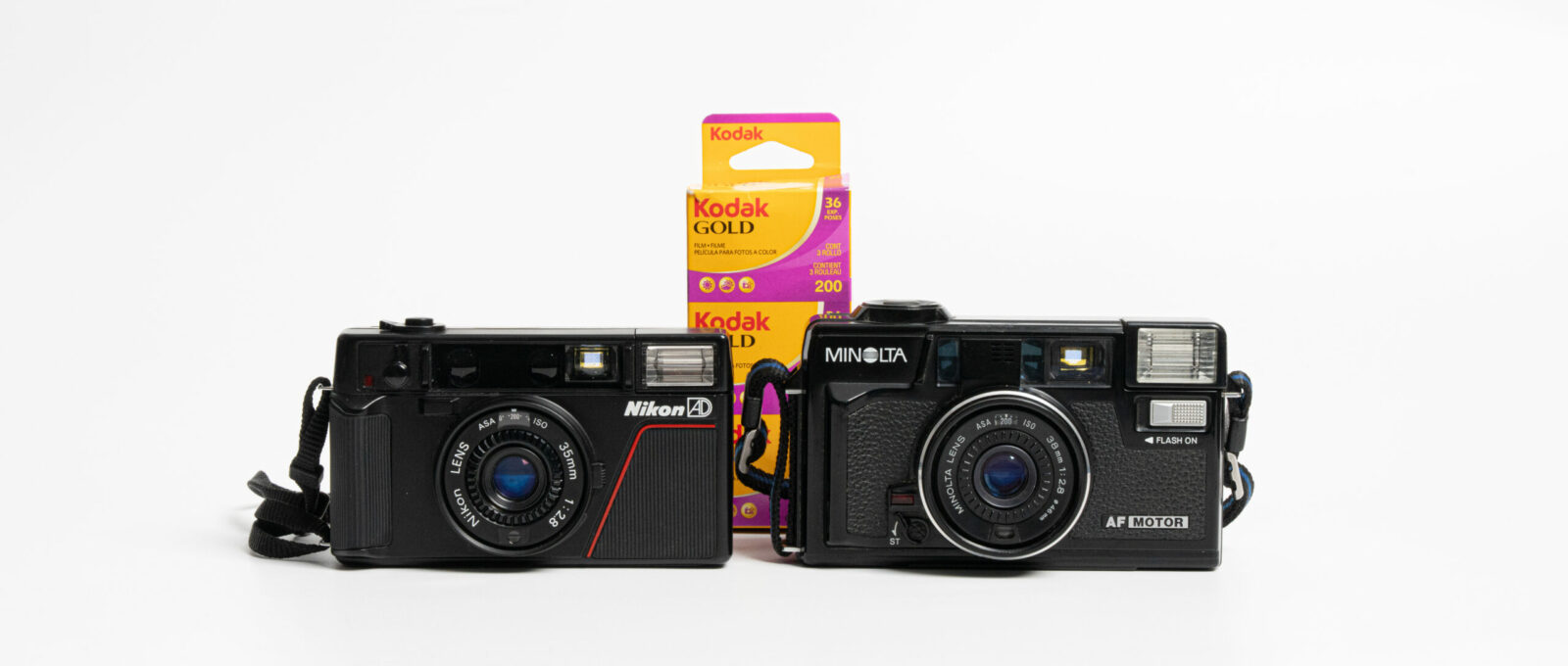
The Bulge – Comparing two 80’s Point & Shoots (Nikon L35AF & Minolta AF2-M)
Konica introduced a new camera style at the end of 1977 with the C35AF (‘Juspin Konica’), paving the way for the first generation of compact autofocus film cameras. These cameras were designed to prioritize ease of use, allowing users to simply point and shoot1 while leaving the focusing and exposure tasks to the camera. They were also referred to as “lens/shutter compacts”. Although earlier models featured manual film advance, they were soon upgraded with motorized, fully automatic film transport.
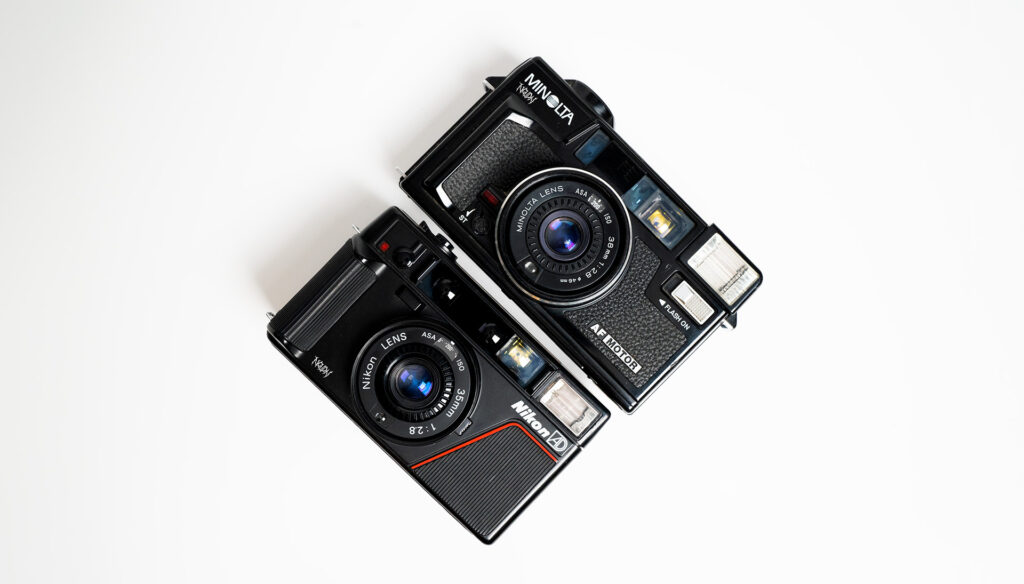
When these cameras were initially released, they were labeled as ‘compact,’ a designation that falls short by today’s standards. Neither of these cameras easily fits into the pockets of jeans or jackets, contrary to what we might expect from a portable camera. This kind of compact shutter camera was also very popular, selling around 7.6 million units (all manufacturers) in 19822.
In this article, we will take a closer look at two of these motorized cameras: the highly popular Nikon L35AD (1983), which is essentially an L35AF with a dateback, and the slightly less popular Minolta Himatic AF2-M.
Unfortunately, my Minolta Himatic AF2-M turned out to have a mechanical issue during the test shoot which prevented the aperture from opening during some photos – meaning many comparison images are missing.
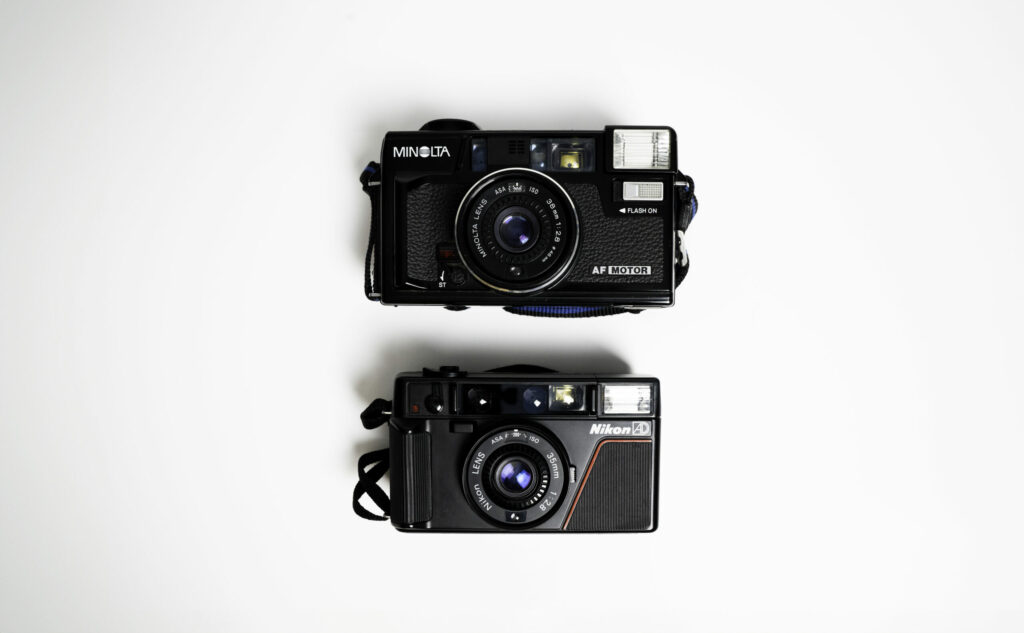
Overview
Both cameras share similar designs and specifications. The Minolta is slightly larger, while the Nikon is a bit heavier. However, it’s worth noting that I used the dateback version for this comparison. The L35AF without dateback weighs the same as the Minolta but feels more compact. Both cameras offer the convenient feature of pre-focusing by half-pressing the shutter, which is essential for effortless photography.

The most notable difference between the two is the lens. In terms of focal length, the Minolta has a 38mm lens, whereas the Nikon has a 35mm lens. The slight variation can be observed in the image comparison below, where all the pictures were taken from the same vantage point.
Another notable distinction is the price point. In Europe, the Minolta Himatic AF2-M is relatively rare to come by, but when available, it typically sells at a price range of 70-120 dollars, occasionally even less.
On the other hand, finding a functioning Nikon L35AD/L35AF for a hundred dollars is considered very lucky, as they commonly reach higher prices around 150-200 bucks, sometimes up to 250 bucks for a near mint 1000 ISO model that has been film tested.
Nikon L35AD (L35AF Dateback)
- F2.8 35mm Sonnar-Type lens 3
- 2 x AA batteries
- Weight L35AD: 440g (with film and batteries)
- ISO 50-400 (later models 50-1000)
- EV 6 – EV 17
- released in 1983
Minolta Himatic AF2-M
- F2.8 38mm Minolta lens4
- 2 x AA batteries
- Weight: 420g (with film and batteries)
- ISO 50-400
- EV 6 – EV 17
- released in 1982
Build Quality
While these cameras may appear similar, they are noticeable different in their build quality. The Nikon L35AD/AF, in particular, seems robust and well-built. On the other hand, the Minolta Himatic AF2-M seems to have more play or looseness, evident in the slight rattling of components such as the shutter and backdoor release. While it’s possible that these variances stem from the specific camera models I tested, the overall superiority of the Nikon is apparent in the better quality of materials used and the tighter fit of its components.
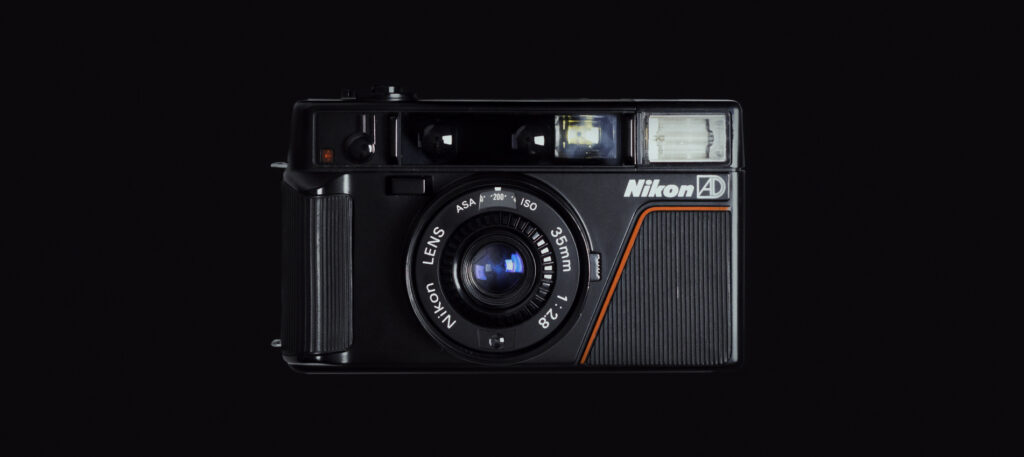
Both cameras share a common weakness: the battery door located at the bottom of the camera. Over time, these doors have become somewhat loose, and the weight of the two AA batteries can occasionally cause the compartment to open slightly, resulting in power loss for the camera.
I suspect that this loss of contact might be part of the reason for the irregular failure to open the aperture. During the test shoot for this article, this issue only occurred with the Minolta. However, I have encountered a similar problem with another Nikon L35AF. Reinserting the battery or using a small piece of tape can solve the problem, but it can certainly be an annoyance.
Test Shoot / Image Quality
Since the Minolta failed on most exposures, there are only a few images I can properly compare. Also, some of the Minolta frames seem underexposed which is likely the result of the same aperture issue described above. However, there are two frames that turned out well which I will use as the benchmark for comparison.
These were taken at the same spot and scanned with the exact same setup. Slight difference in color might occur since they were digitized using Negative Lab Pro in Lightroom. All photos are taken on Kodak Gold 200.
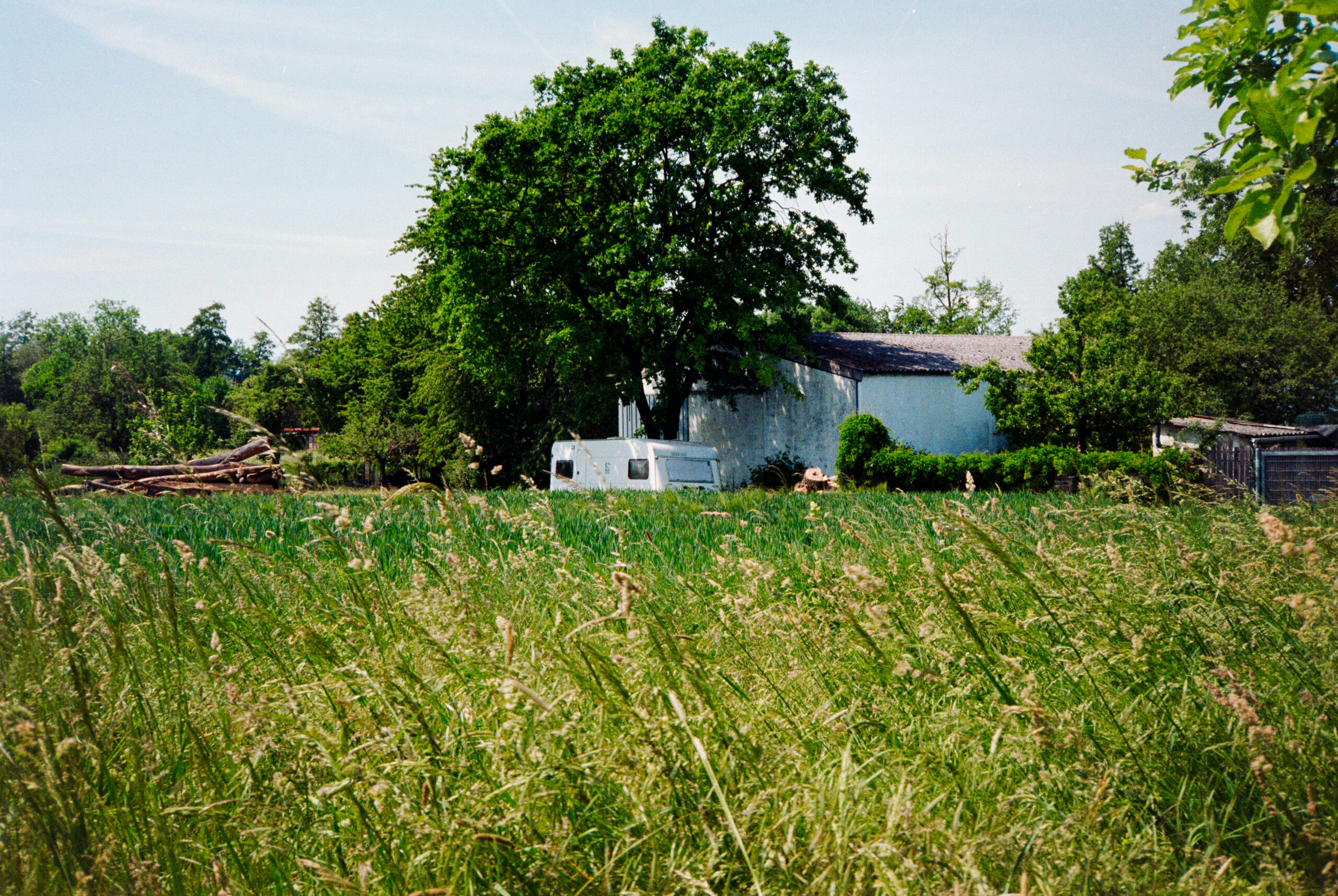
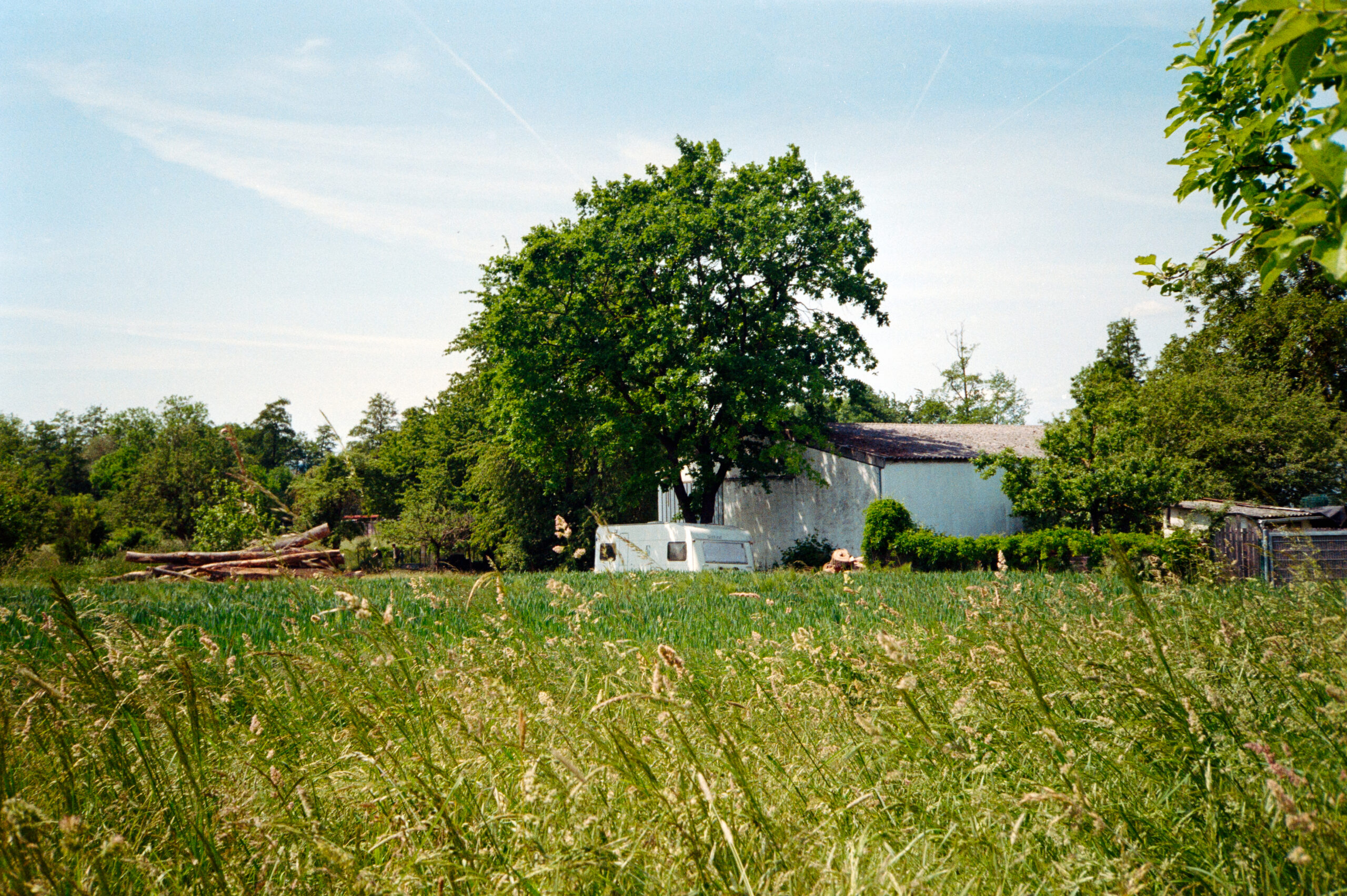
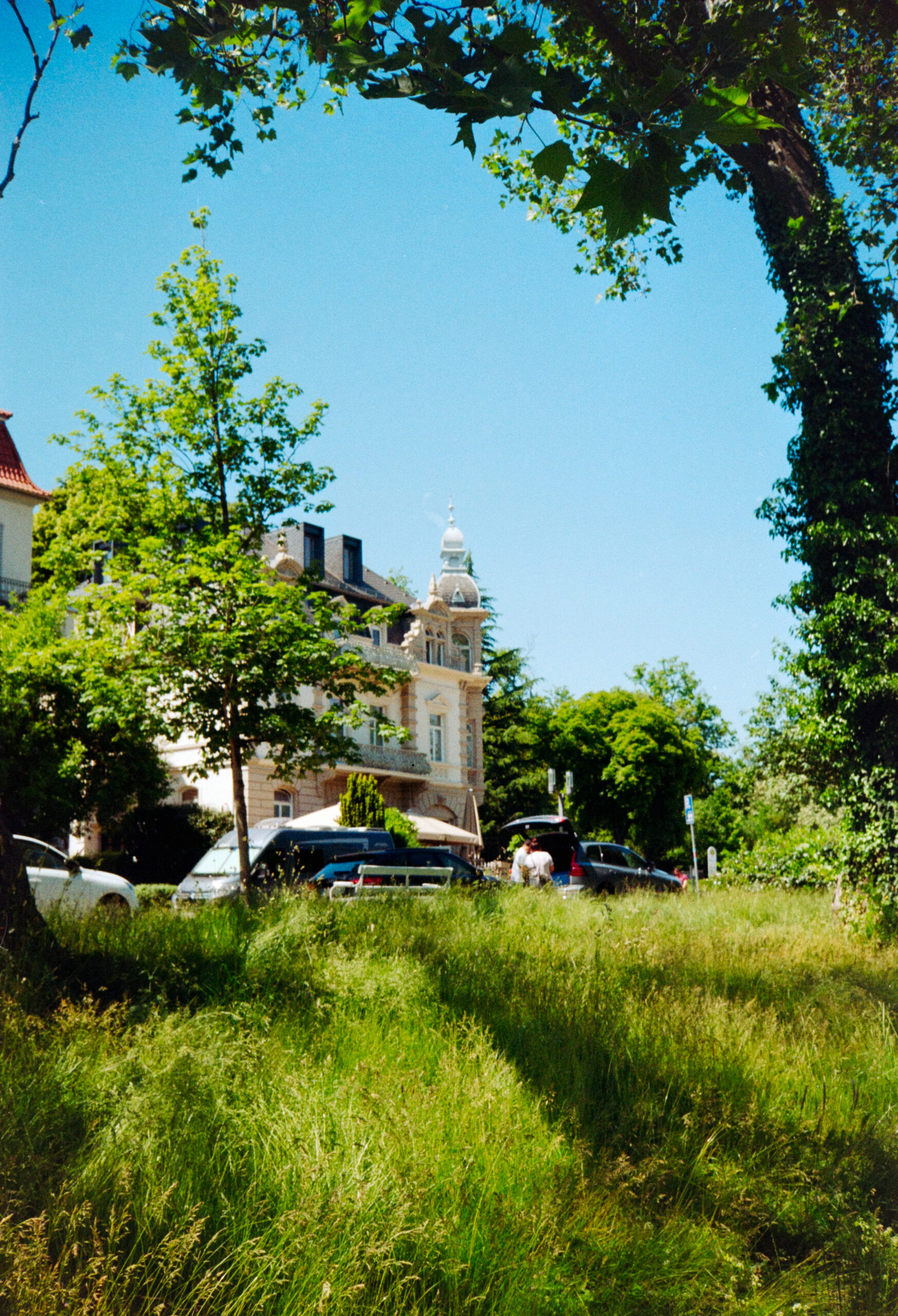
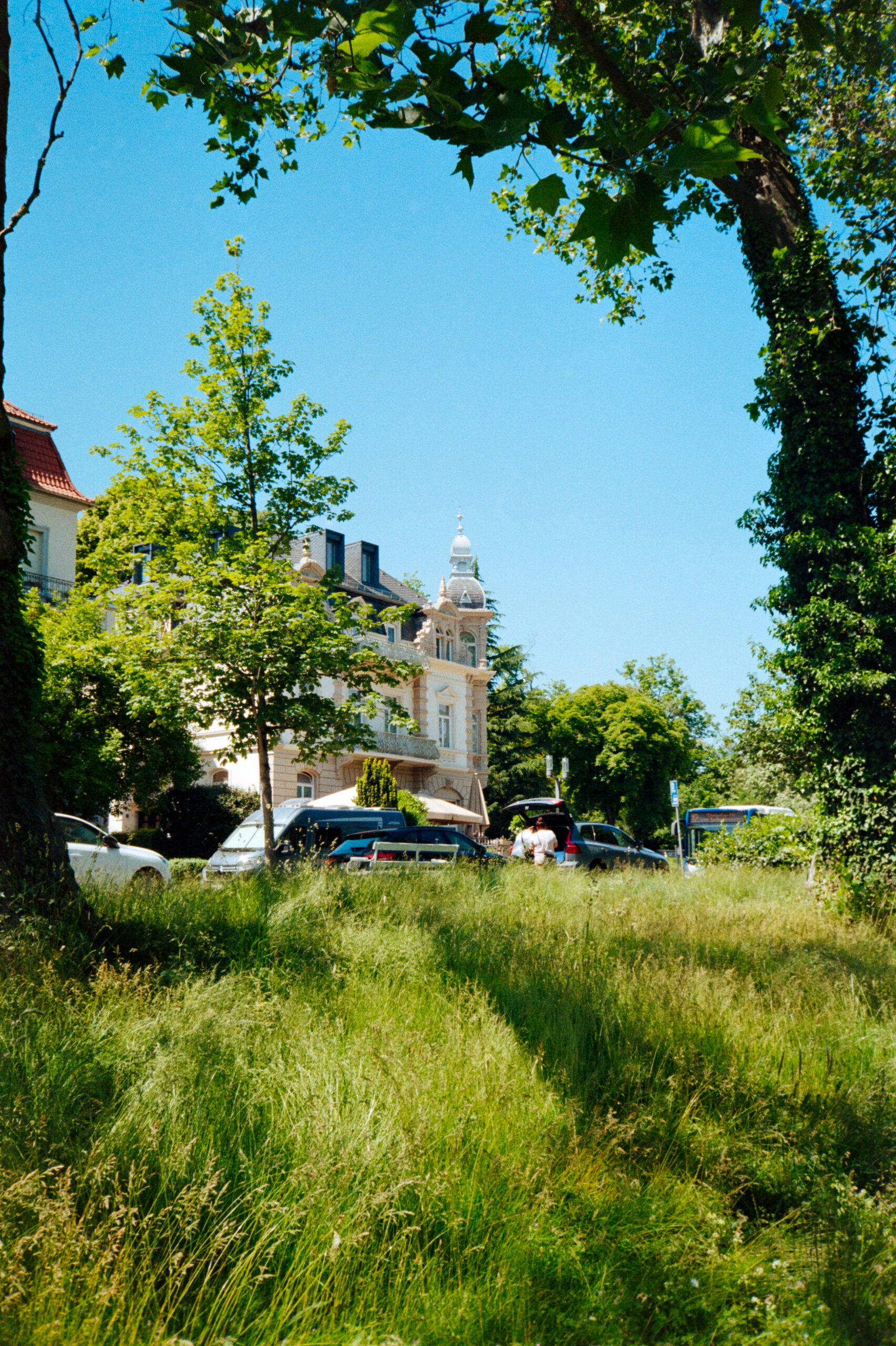
Verdict
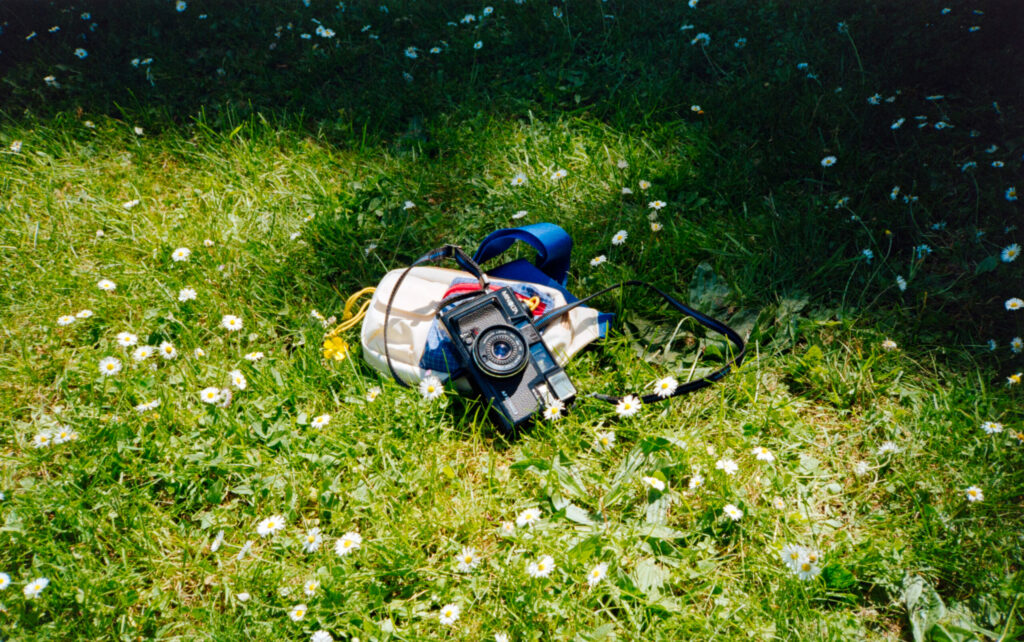
Unfortunately, this test is not nearly as extensive as I intended it to be. Since the mechanical issue with the Minolta prevented nearly all exposures, the few that came out well are of nice quality.
The autofocus of those early cameras is always hit or miss as they are easily thrown off by water or bright surfaces – so random slight blurriness is unavoidable in some cases.
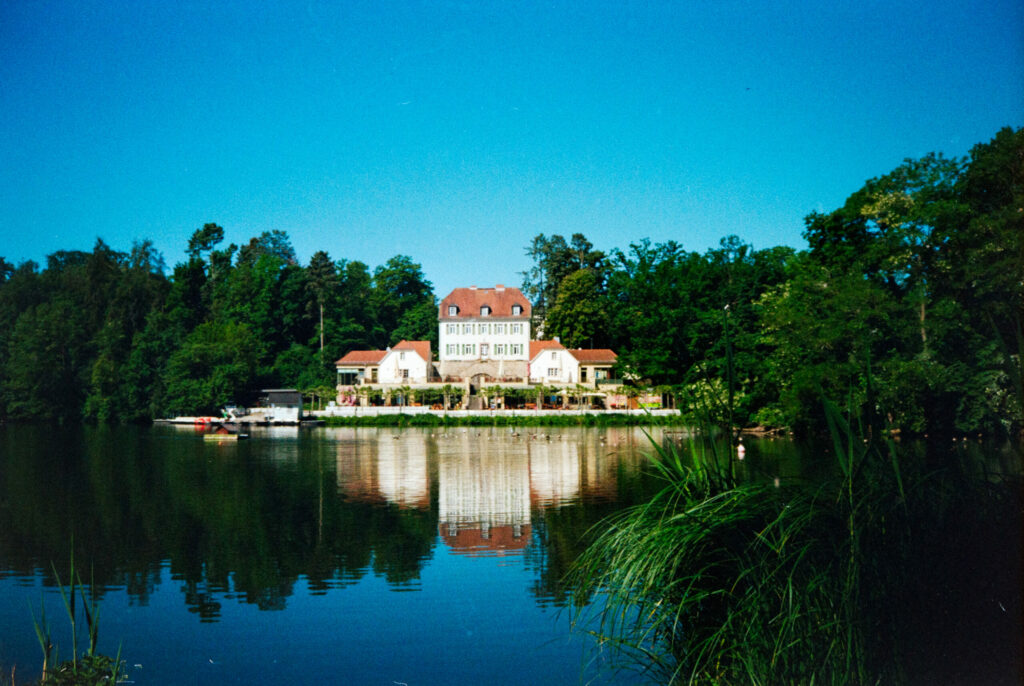
Both cameras are very similar, but the Nikon L35AF/AD is clearly better built and takes sharper pictures. The Minolta AF2-M is no cheap camera as well so I would always spend the extra bucks needed to get the Nikon.
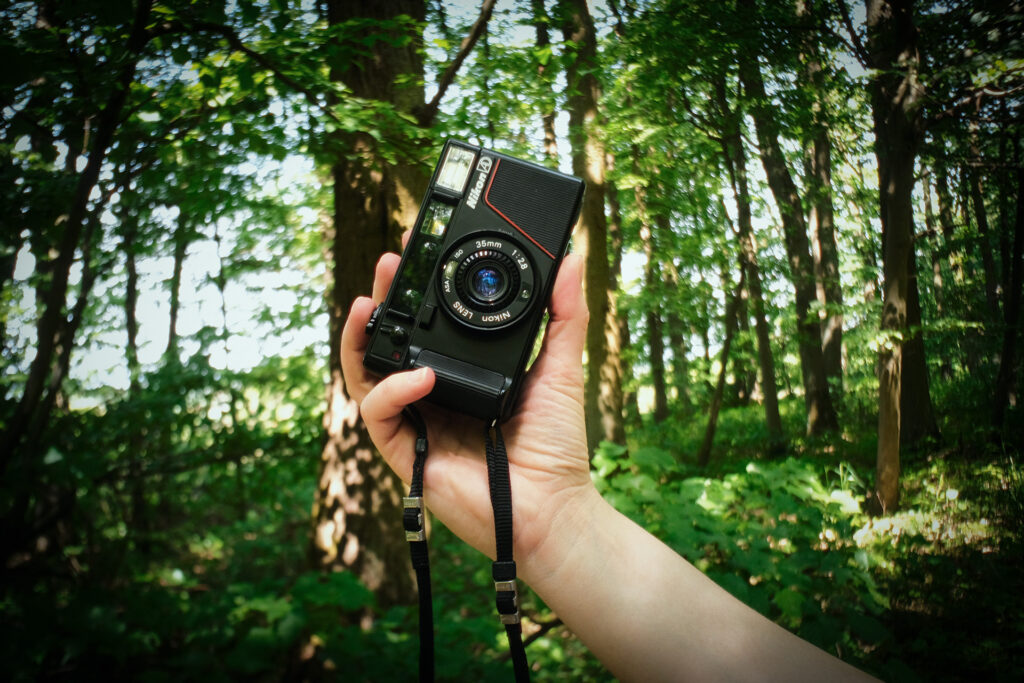
The title hints at a noticeable issue with these cameras – attempting to slide them into your pants will create an awkward protrusion. While it could work with generously sized men’s cargo pants, for other pants: good luck trying to squeeze them in.
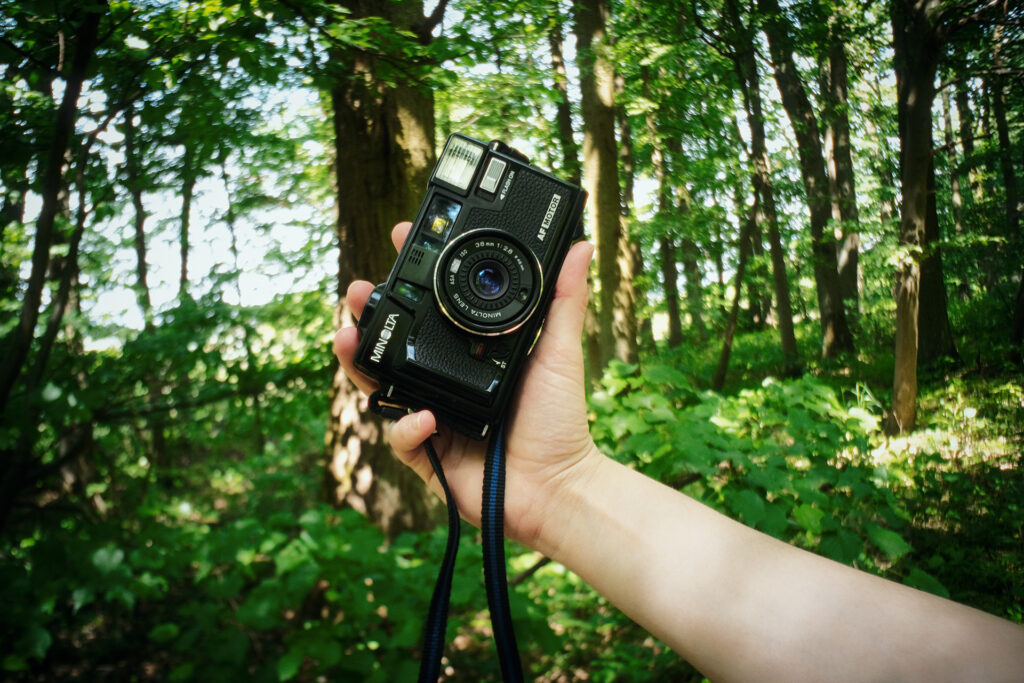
I carry them in a fanny pack or around my neck/shoulders. They’re not small, so you’ll need to think about how to carry them. Smaller point-and-shoot cameras fit in pockets but can feel flimsy. Read my article about two of them:
Sources / Footnotes
- Definition:
https://camerapedia.fandom.com/wiki/Point-and-shoot - Self proclaimed number of units sold found in the Japan Times Issue 1983-02-08: Iss 30200
https://archive.org/details/sim_japan-times_1983-02-08_30200/page/n3/mode/2up?q=L35AF - Source: History of the L35AF on the official Nikon page:
https://imaging.nikon.com/imaging/information/story/0033/ - Source: Minolta Himatic AF2 catalogue with technical data:
https://www.tashimareport.info/Minolta/HiMatic/verschiedene/PR-AF2-S2-G2.pdf#page=11


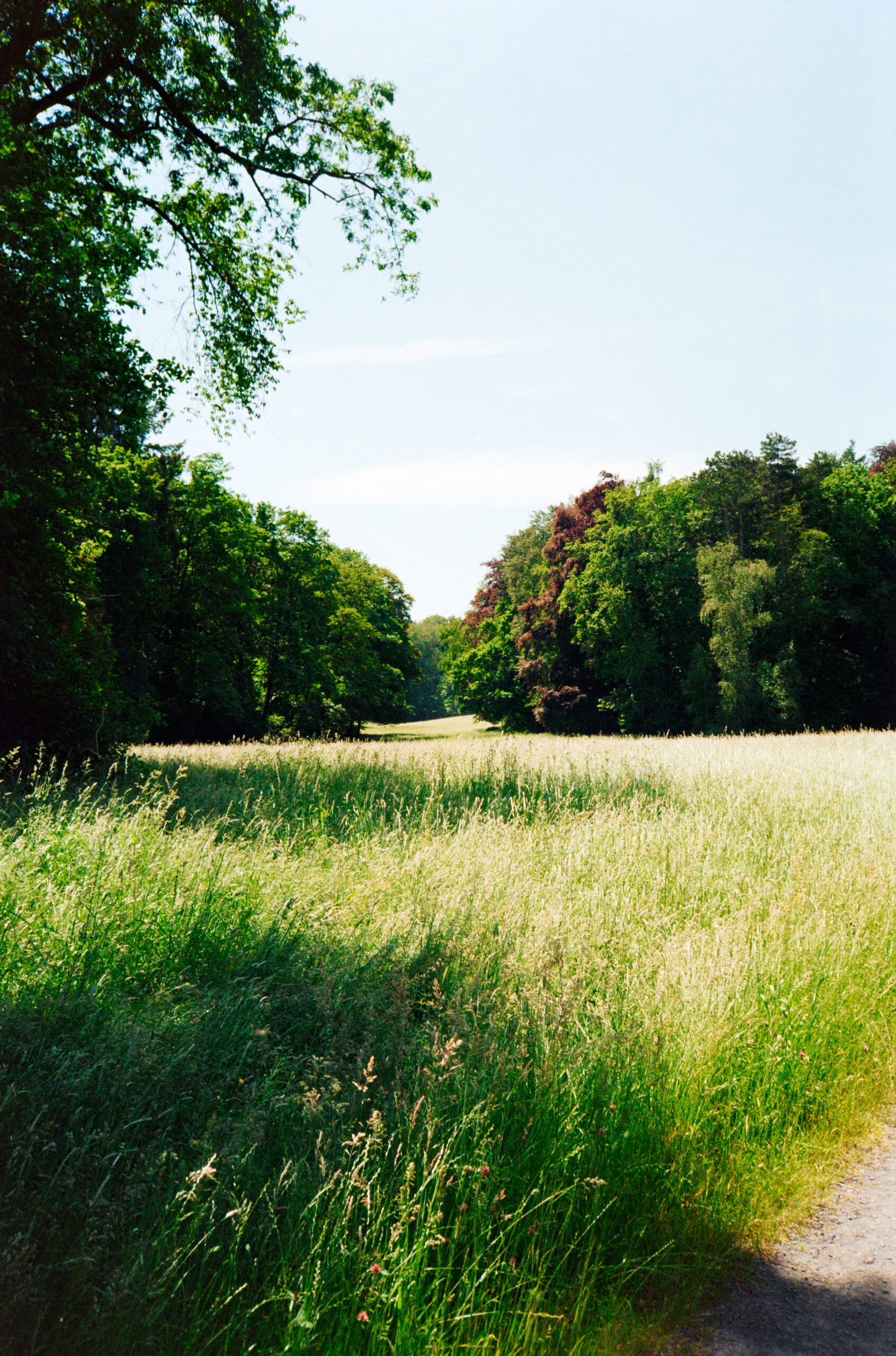

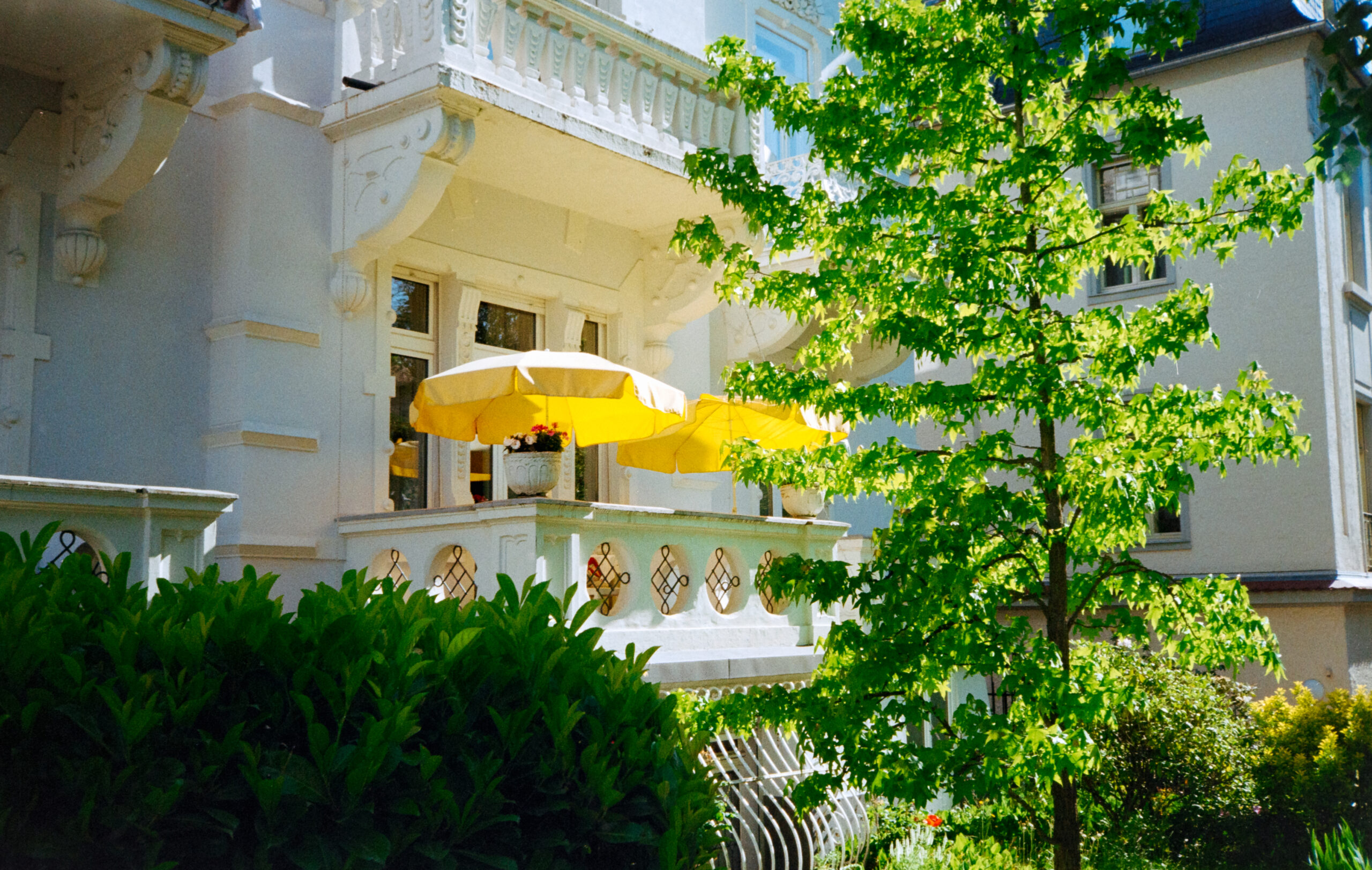
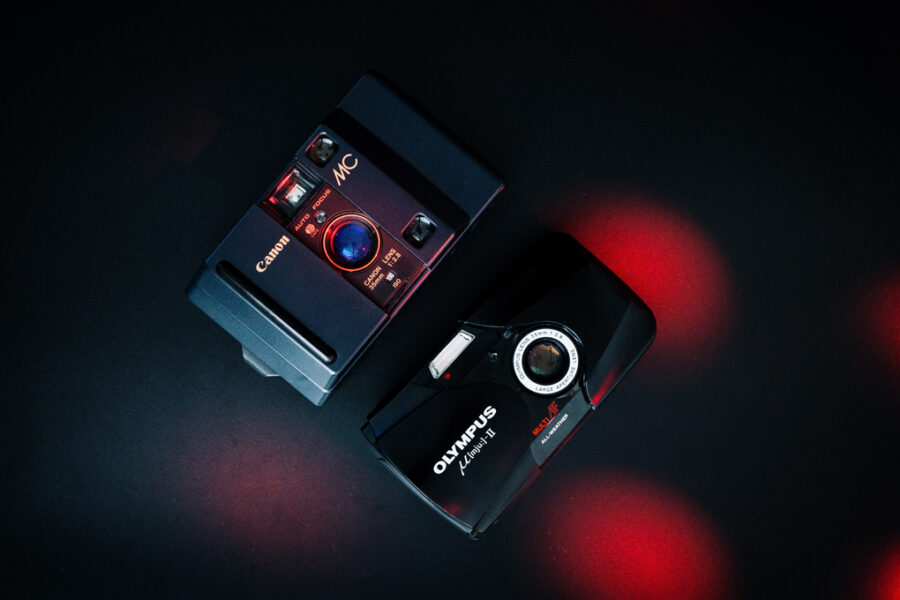
Leave a Comment